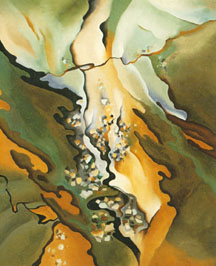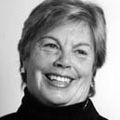Pure & Simple
Vermonters Need Clear Water
With 808 lakes and ponds and over 7,000 miles of rivers and streams, water is a big part of the Vermont experience. Ancient seas were home to the famous Charlotte Whale, and glacial ice carved our hills and valleys. Snow fuels the ski industry, and rain overwhelmed us in May and June. In many ways water defines Vermont. But to what extent do Vermonters define the quality of our waters?
With European settlement came the beginnings of water quality degradation. In the late 19th century, the town of Middlebury experienced a serious typhoid outbreak signaling that the waters of Otter Creek were no longer safe to drink. In the early 1970’s the majority of communities with municipal sewer facilities simply discharged raw sewage directly into the surface waters, leaving the Connecticut River to be described as a “landscaped sewer.” Since the passage of the Clean Water Act in 1972 and the Safe Drinking Water Act in 1974, many of Vermont’s lakes and waterways have been restored to provide safe swimming and fishing, as well as support healthy native species of fish and other aquatic animals.
Read the full article |
|
The New Wave of Ecosystem Research:
UVM Graduate Students Heather Burgess and Kate Crawford
Fight to Protect Lake Champlain
On any given summer day, the 500 plus-mile-long shoreline of Lake Champlain teems with people and pets enjoying one of Vermont’s greatest natural resources. Yet more and more, disturbing news about the health of Lake Champlain comes to light.
So, at 28 I am back in college, pursuing a Master’s degree in Geology at the University of Vermont. I don’t study volcanoes or rocks or earthquakes; I study… lake mud. Dr. Andrea Lini, my advisor, is more environmental scientist than geologist, working with other environmental scientists around the state, observing changes in the lake over time through changes in lake mud.
Lake Champlain is always a hot topic: mercury levels, blue-green algae blooms, phosphorus loading – all the result of human activities. In the larger history of the lake, humans have only inhabited this region for a short time.
Read the full article |
|
Trickle Up, Speak Out: Local is Global
A stream of passion for the natural world has run through Jill Reymore’s life since childhood. Her “especially soft spot for water habitats,” as she calls it, has led Reymore all over the United States to her current home in Randolph. Recently armed with an environmental law degree from Vermont Law School, Reymore is focusing her passion on local causes, from stabilizing the White River’s banks to preserving the springs in Randolph Center from overdredging for bottled water profits. Getting involved locally, she believes, is the best way to protect our water globally.
Read the full article |
|
Once in a Lifetime - Georgia in Vermont
Popular misconceptions about Georgia O’Keeffe are that she just painted flowers, and painted them big; and later, still life compositions of bleached desert bones. Likewise, many people think of her husband, Alfred Stieglitz, as just a photographer, famous for Pictorialist prints of New York’s Flatiron Building, and his fetishized shots of O’Keeffe’s disembodied nude anatomy.
In reality, Stieglitz was a major force in early 20th century art, striving to have the United States surpass the Europeans in the visual culture vanguard – and not by beating them at their own game. Rather, by cultivating, in the select group of artists he championed, a specifically “American” art. In addition to his own work, his New York City ensemble included the painters Arthur Dove, Marsden Hartley, John Marin and occasionally, Charles Demuth; colleague in photography Paul Strand; and, alone among the boys, the young woman from Wisconsin, Georgia O’Keeffe, whose paintings and striking appearance caught the older, married photographer’s eye.
Read the full article |

|
Publisher's Message
What if Life Was the Hora?
Imagine you family members: all of them, of every size and age...the ones you love, the ones you like and the ones who are so-so. There they are, holding hands in a big circle of 200 others, dancing to Hava Nigila, stepping forward left with the right foot... three steps forward, one step back... again and again, faster and faster - culminating in the most cheerful, joyous motion possible. They would be dancing the traditional Hora, a dance of rejoicing and celebration and a must at Jewish weddings.
Read the full article |

|
Suffragette City's 12-year Old Concert Promoter
Women's Right to Rock!
Marissa Grace Legott recalls how she came home from school one day and declared: “Dad — we have to throw a concert in the park, like the ones you organize—but with just female artists.”
He said, “Marissa, you’re a genius!”
This genius, who was eight years old at the time, is bright-eyed and all smiles as she tells the history of the annual rock concert that bears her name. Female-fronted bands or women musicians perform along the riverfront as Seneca Falls celebrates “Convention Days” in July. “My hopes for the first one was just that a bunch of people would be coming down to see some of the great entertainment! We had acts from Rochester and Syracuse coming all the way here, so I just hoped for a good turnout!”
Read the full article |

|
|